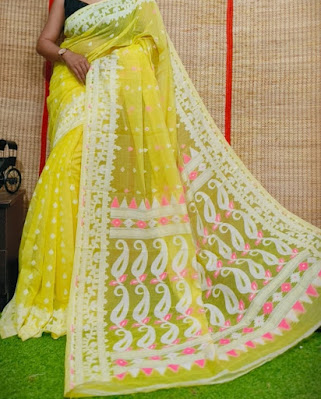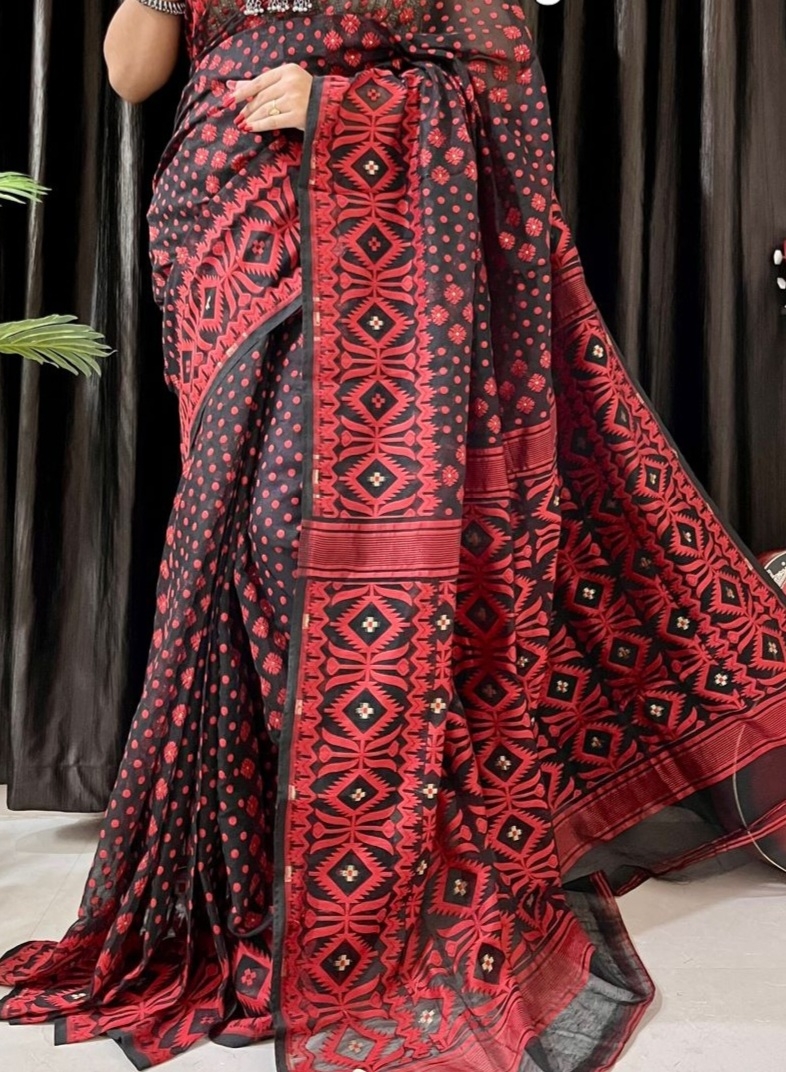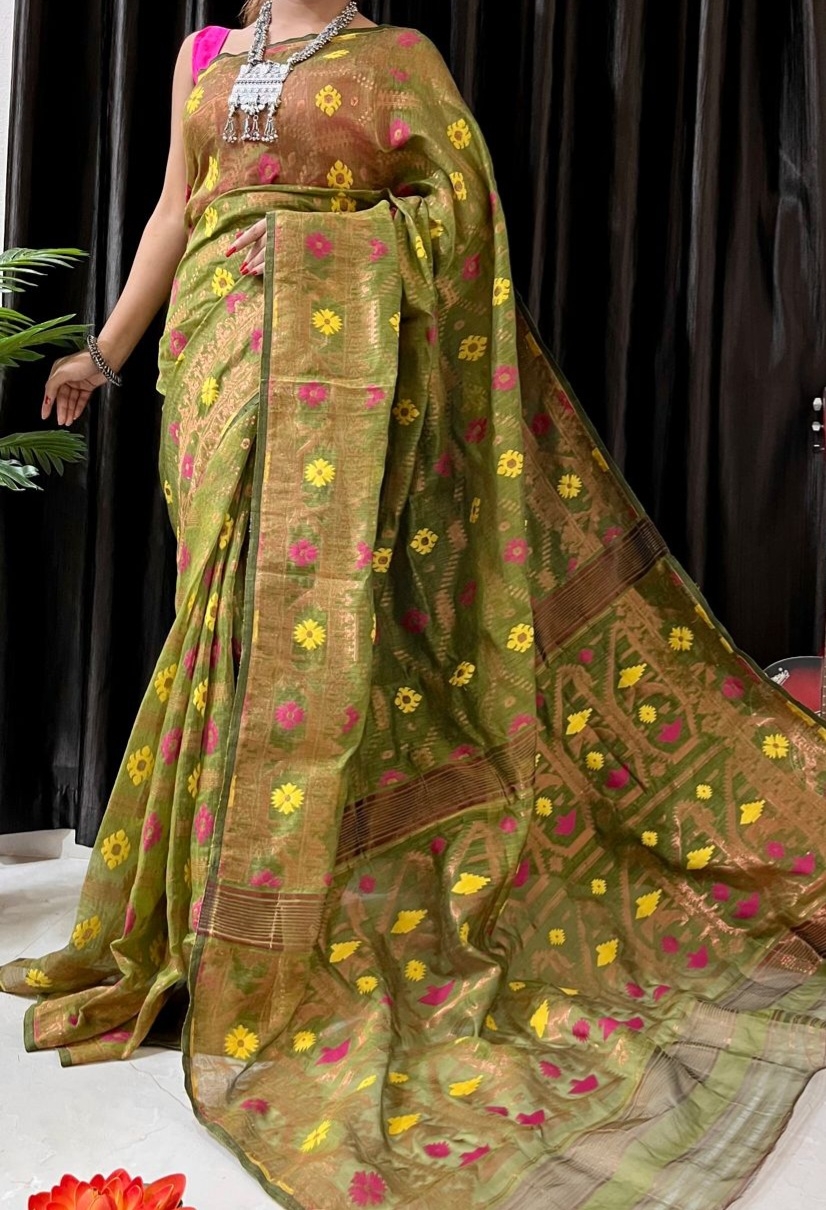Jamdani sarees are one of the most beautiful and exquisite sarees in the world. Originating in Dhaka, Bangladesh, these sarees have been around for centuries, and their popularity has only increased over time. These sarees have been passed down through generations as heirlooms, and are highly prized for their beauty and craftsmanship.
In this blog post, we will explore the history, production process, and cultural significance of Jamdani sarees.History of Jamdani Sarees
The history of Jamdani sarees can be traced back to the
Mughal era in Dhaka, Bangladesh. The name Jamdani comes from the Persian words
"Jam" meaning flower and "Dani" meaning vase, which
reflects the floral patterns and designs found in these sarees.
During the Mughal period, Jamdani sarees were considered a luxury item and were worn by the wealthy and noble families. The intricate weaving of these sarees was done by skilled weavers who were patronized by the Mughal emperors.
Production Process
The production of Jamdani sarees is a complex and
time-consuming process. The weaving is done by hand on a traditional loom, with
each thread carefully placed to create the desired pattern. The yarns used in
Jamdani sarees are typically made from fine cotton or silk, which gives the
saree its softness and lightness.
The weaving process involves a small shuttle, which is used
to pass the weft threads through the warp threads to create the intricate
patterns. The weavers use a graph paper to map out the design and count the
number of threads needed for each part of the pattern. The process can take
several weeks to several months, depending on the complexity of the design.
The beauty of Jamdani sarees lies in their intricate designs
and motifs. The patterns are woven into the fabric, with each thread carefully
placed to create a stunning and detailed design. These sarees are often adorned
with floral motifs, geometric designs, or even scenes from nature.
Another unique feature of Jamdani sarees is their
transparency. The fabric is woven in such a way that it allows light to pass
through it, giving it a delicate and ethereal quality. The softness and
lightness of the fabric make it comfortable to wear, even in hot and humid
weather.
Cultural Significance
Jamdani sarees are an important part of the cultural
heritage of Bangladesh and India. They are often worn during traditional
ceremonies and festivals, such as weddings, Durga Puja, Eid; and often passed down
as family heirlooms.
Jamdani sarees are a true masterpiece of craftsmanship and artistry. They represent the rich cultural heritage of Bangladesh and India and are a testament to the skill and creativity of the weavers. Whether worn for a special occasion or as a fashion statement, a Jamdani saree is a timeless piece that will always be cherished.
Dancing Looms brings you Jamdani sarees in beautiful hues and designs. Some are shown here. We have many more to show you. Let us know in comments. Also, tell us if there is any colour that is your favorite.
















Comments
Post a Comment